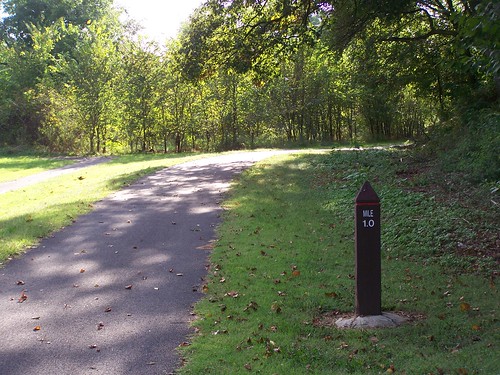Biking for transportation in Copenhagen. Flickr photo by Marionzetta.
Been busy because of the National Bike Summit and a small invitation conference on bikesharing that I apparently crashed (which bothered some people...).
In a continuation of a sorts of the previous blog entry, one of the really really interesting things that came out of the bike sharing conference was how three different people representing three communities on the West Coast discussed how the "bike advocacy community" has not necessarily been favorable to what we would call biking as transportation in terms of various projects in those communities.
In California, home of John Forester, the dean of
vehicular cycling (which aims to have bicyclists act just like cars and ride on the street in traffic with limited special treatment), vehicular cyclists "control" state policy on biking.
2. Apparently, bike advocates in certain jurisdictions haven't been particularly supportive of what we might think of as integrated bicycle promotion program delivery systems (for more on this general idea of integrated programs, see this past blog entry), including bicycle sharing and folding bike promotion initiatives targeting commuters. Both programs are focused on bringing new people to biking, but to biking as practical transportation.
------
I'm not going to claim I am completely objective, but I had an experience in September 2009 which was important to me in terms of uncovering unstated biases about biking and how people "should" be biking, and how these biases can shape, unintentionally, bike planning.
I had been a street cyclist primarily, not too interested in trails--mostly because I am not a recreational cyclist for the most part, and because there aren't that many trails per se in DC.
But one day after finishing a volunteer obligation, and wanting to go buy some stuff at Shoppers Food Warehouse (they don't have any stores in DC) on my way home, I happened to ride a section of the Northwest Branch Trail of the
Anacostia River Tributary Trail System in Prince George's County, between Rhode Island Avenue and Queens Chapel Road.
This trail is a good example of designing a trail so that it integrates and connects civic, transportation, cultural, and commercial assets and destinations.
In the stretch between those two roads you have a nearby restaurant, a basketball court, a trail connection to a nearby park, a ballfield, of course various green areas, tennis courts, a playground, and once you get to Queens Chapel, it's a short distance to the West Hyattsville Metro station on the green line subway, two shopping centers with supermarkets (one with a CVS), and a traditional commercial district with a supermarket.
Playground on the Northwest Branch Trail, adjacent to a number of apartment complexes popular with lower income families.
(Note that the plan for the Cynwyd Heritage Trail in Lower Merion Township outside of Philadelphia, but connecting to the Manayunk neighborhood, has a similar framework for ensuring connectivity, and cultural and commercial links.)
AND, until riding that trail I hadn't really considered when street cycling, how much mental overhead is expended on defensive cycling--looking out for and worrying about cars--and how you don't have to waste that energy on trails (at least on most trails--although high-use trails with limited capacity, like the Mount Vernon Trail, have similar problems--see "
Is the Mount Vernon Trail too crowded for bikers?" from the Fort Hunt Patch).
It happened that I had just started as a project manager/bike and pedestrian planner in a Maryland county, specifically tasked and grant funded to produce a pedestrian and bike plan for a 120 square mile section of the county, and my little trail experience encouraged/"forced"/made me (re)consider my role in that process, was it to emphasize my biases and shape the finished plan towards street cycling?, or was my job to facilitate, and work to enable cycling for transportation, in a systematic way, for all demographics (age, gender, race/ethnicity, household type)?
Of course it was the latter, and in the plan, recommendations for programming (what in bike and ped planning is called "education and encouragement") and process redesign of how the government agencies and various policies and regulations were devised to "produce" an environment favorable to and supportive of sustainable transportation more broadly.
Recreational riding on the weekend, at higher speeds on roads in more rural areas, is more typical of the kind of cycling that "most people" in the US are familiar with. Flickr photo by chrisoco.
Labels: change-innovation-transformation, civic engagement, community organizing, protest and advocacy, social change, transportation planning
![]()
![]()





0 Comments:
Post a Comment
<< Home